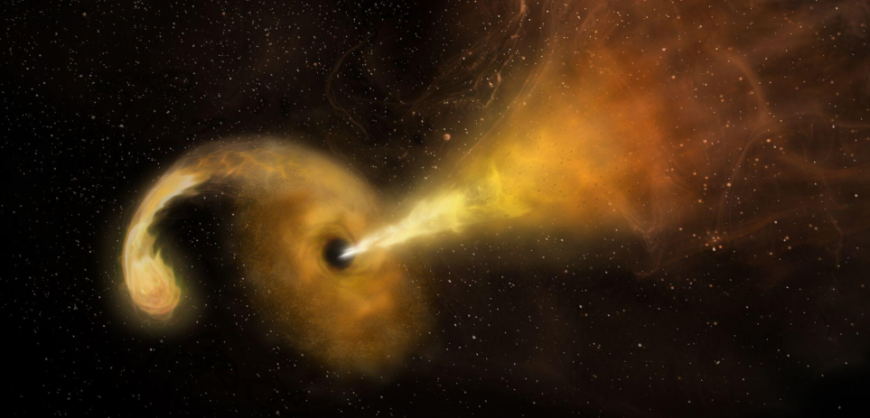For the first time, astronomers have directly imaged the formation and expansion of a fast-moving jet of material ejected when the powerful gravity of a supermassive black hole ripped apart a star that wandered too close to the cosmic monster.
The scientists tracked the event with radio and infrared telescopes, including the National Science Foundation’s Very Long Baseline Array (VLBA), in a pair of colliding galaxies called Arp 299, nearly 150 million light-years from Earth. At the core of one of the galaxies, a black hole 20 million times more massive than the Sun shredded a star more than twice the Sun’s mass, setting off a chain of events that revealed important details of the violent encounter.
Only a small number of such stellar deaths, called tidal disruption events, or TDEs, have been detected, although scientists have hypothesized that they may be a more common occurrence. Theorists suggested that material pulled from the doomed star forms a rotating disk around the black hole, emitting intense X-rays and visible light, and also launches jets of material outward from the poles of the disk at nearly the speed of light.
“Never before have we been able to directly observe the formation and evolution of a jet from one of these events,” said Miguel Perez-Torres, of the Astrophysical Institute of Andalusia in Granada, Spain.

The first indication came on January 30, 2005, when astronomers using the William Herschel Telescope in the Canary Islands discovered a bright burst of infrared emission coming from the nucleus of one of the colliding galaxies in Arp 299. On July 17, 2005, the VLBA revealed a new, distinct source of radio emission from the same location.
“As time passed, the new object stayed bright at infrared and radio wavelengths, but not in visible light and X-rays,” said Seppo Mattila, of the University of Turku in Finland. “The most likely explanation is that thick interstellar gas and dust near the galaxy’s center absorbed the X-rays and visible light, then re-radiated it as infrared,” he added. The researchers used the Nordic Optical Telescope on the Canary Islands and NASA’s Spitzer space telescope to follow the object’s infrared emission.
more at public.nrao.edu

































